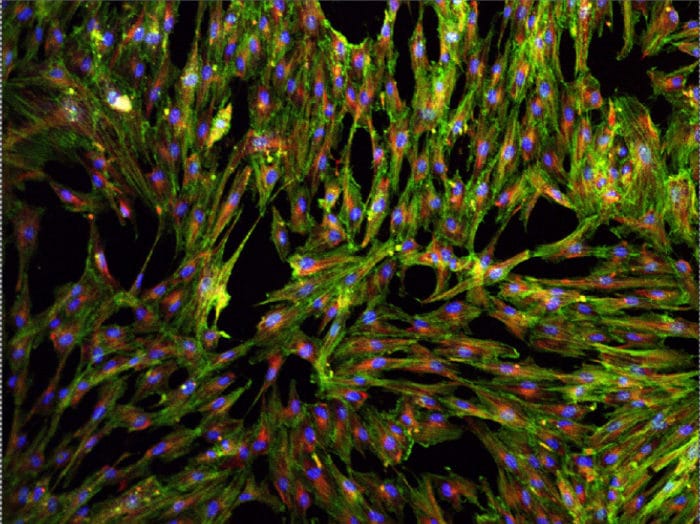The team describes the effect of shear stress induced fluid flow on stem cell differentiation
In this study, we investigated the effect of the long-term (10 days) application of a defined and uniform level of fluid flow (uniform shear stress of 1.2 x 10(-3) N/m(2)) on human bone marrow stromal cells (BMSC) cultured on different substrates (i.e., uncoated glass or calcium phosphate coated glass, Osteologictrade mark) in a 2D parallel plate model. Both exposure to flow and culture on Osteologic significantly reduced the number of cell doublings. BMSC cultured under flow were more intensely stained for collagen type I and by von Kossa for mineralized matrix. BMSC exposed to flow displayed an increased osteogenic commitment (i.e., higher mRNA expression of cbfa-1 and osterix), although phenotype changes in response to flow (i.e., mRNA expression of osteopontin, osteocalcin and bone sialoprotein) were dependent on the substrate used. These findings highlight the importance of the combination of physical forces and culture substrate to determine the functional state of differentiating osteoblastic cells. The results obtained using a simple and controlled 2D model system may help to interpret the long-term effects of BMSC culture under perfusion within 3D porous scaffolds, where multiple experimental variables cannot be easily studied independently, and shear stresses cannot be precisely computed.
S. Scaglione, D. Wendt, S. Miggino, A. Papadimitropoulos, M. Fato, R. Quarto, I. Martin (2007): “Effects of fluid flow and calcium phosphate coating on human bone marrow stromal cells cultured in a defined 2D model system”. J Biomed Mater Res A
All Resources
Never stop learning!
Check publications from the team, protocols, and useful information to boost your research and get into organ on chip technology!


